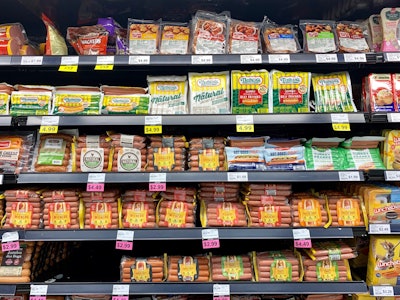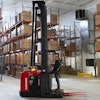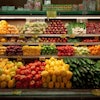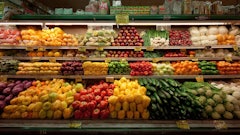
It’s no secret that Americans are facing tremendous economic headwinds. Circana’s Volume Vortex Shopper Survey found that 86% of high-income families have changed how they buy and use everyday products, while 45% of middle-income singles and couples have needed help from family members to meet their expenses.
Inflation is exacerbating this pressure because it’s also outpacing wage growth. Since 2019, food and beverage prices have grown 30%, forcing Americans to make difficult and creative decisions about how they’re putting food on the table. To their great credit, retailers and consumer packaged goods (CPG) manufacturers have responded to consumer distress. While each brand is approaching its response in different ways, retailers have announced price reductions in order to help consumers manage their shopping trips or add a few more items to their baskets.
However, retailers and CPGs can do more to help consumers. They first need to understand how the economy has changed consumer behavior and adapt using creative strategies around assortment, promotions, displays, and category and occasion management.
Make the most of the trending consumer moments
As we look at where consumers are spending their discretionary and non-discretionary income, we’ve seen growth in areas where consumers don’t mind parting with their cash if it means saving money in the long-term. Categories such as prestige beauty, home care, and over-the-counter healthcare products are seeing positivity because consumers are embracing a do-it-yourself (DIY) ethos to maintain their appearance, their homes, and their health to prevent incurring even bigger expenses down the line.
The return of face-to-face office work and the pressure on hybrid workers to have their webcams turned on means people are much more conscious of how their hair and makeup look than they used to be. At the same time, they’re less able to afford trips to the salon for professional hair styling, manicures, and pedicures. Social media has helped fill the void; tutorials are fueling a true DIY moment.
Retailers shouldn’t ignore this. Instead, they should zero in on what consumers are opting to do themselves and stocking the right products. Responding to viral moments requires being in step with social media, having a high degree of agility, and having the ability to pivot and bring viral products into the store if they aren’t already. One example could be a “what’s hot on social” end cap display with some signage saying, “Want to make the viral ice cream recipe with cottage cheese? Here’s what you need.” A little shopper education can go a long way toward making these displays successful.
Innovate around assortment
Inflation-weary consumers are looking for deals, yes, but they’re also open to engagement and a reason to return to a store beyond stocking up on essentials. A great way to engage with shoppers is by targeting assortment and leaning into occasion management. Retailers and category managers already do a fantastic job of this around holidays like Mother’s Day and marking events such as graduation by setting up displays with balloons, greeting cards, and flowers.
But why wait for a holiday to create an occasion when there are other reasons throughout the year, like the launch of Beyoncé’s country album? While grocery stores may not sell music, they certainly sell the items that hosts of Cowboy Carter listening parties need, such as the ingredients to alligator tears cocktails, spaghetti, lemonade, and poker chips for a round of Texas Hold ‘Em. Curating themed displays can not only bring a younger audience into the store but also generate excitement and create a one-stop entertainment hub that builds buzz.
Focusing on displays and occasion management is especially important at a time when promotions just aren’t as effective as they’ve been in the past. The frequency and depth of promotions have increased over time, but the response has lagged, and lifts aren’t where they need to be. Promotion performance has varied across departments when leveraged – perishables, including produce, meat, deli, and seafood, have done well in promotions, whereas baking and dairy promotions have been less successful. To help consumers looking for deals, retailers need to embrace a test-and-learn approach as they experiment with their mix of display types and price reductions to see what works in this environment.
Building excitement through new products and trials
Consumers are exhausted by financial pressures and the daily grind, but they’re still looking for adventure. New products and the innovation they can deliver, especially if combined with some of the strategies mentioned above, can help bring some excitement back to the shopping experience. Supply chain challenges and other changes in manufacturing caused innovation to lag over the last few years, but we’ve seen encouraging signs that innovation is on the uptick in 2024. This is great news for retailers and CPGs because innovation in new products drives growth, keeps shoppers in the store, and builds energy and enthusiasm in any category.
The new products that reached this status in 2023 accounted for an 18% increase in total multi-outlet sales, compared to an 11% increase in 2022. They succeeded at this scale by tapping into consumer desire for new experiences and product formats, achieving new levels of convenience, and co-branding or licensing with other brands to extend beyond the core brand’s category, among other strategies.
However, because of inflation, consumers may be more hesitant to experiment with new products and stick with what they already know. To counter this reluctance, retailers will need to invest in and double down on strategies that drive trials of new products, such as coupons, creative displays, and in-store sampling.
While the last several years have been trying for retailers, CPGs, and most of all, consumers, there’s good reason to be optimistic. After a three-year decline, year-to-date food and beverage volume growth is up 1% in 2024, and May’s Consumer Price Index for food at home found that prices for food at home were up just 1% since last year and remain unchanged since April. Although this is positive news, there will continue to be uncertainty in the market for quite some time. However, retailers and CPGs can continue to thrive by focusing on innovation, becoming more agile, and connecting with consumers in surprising and engaging ways.




















